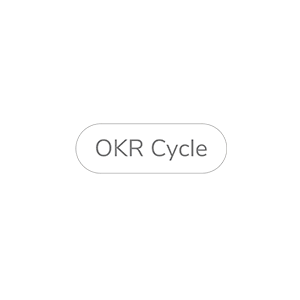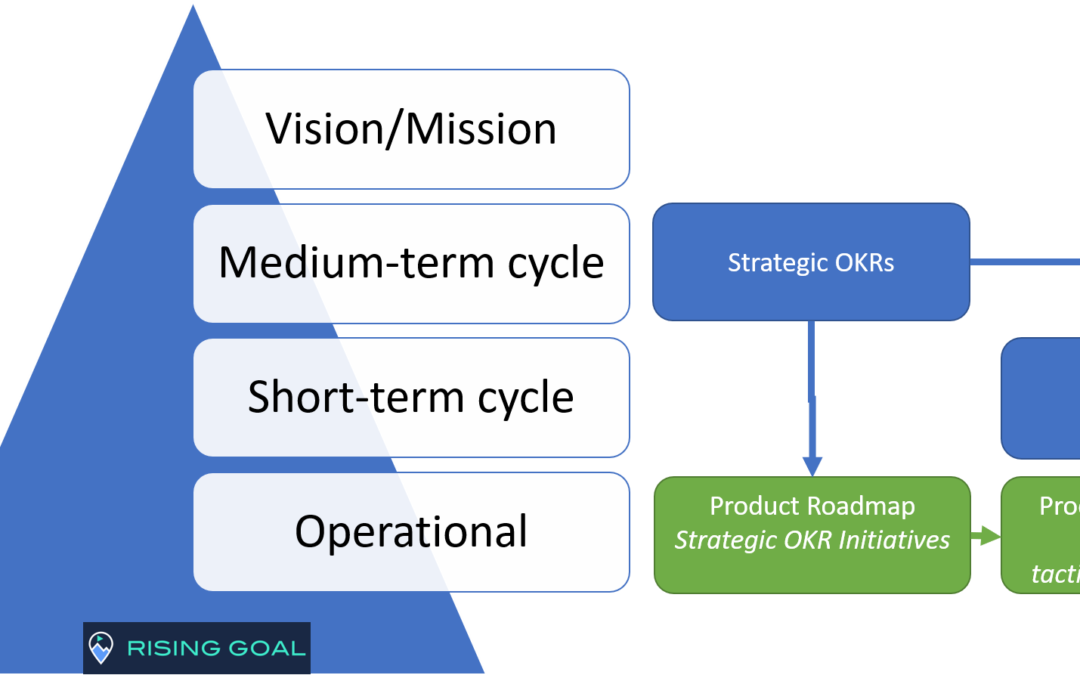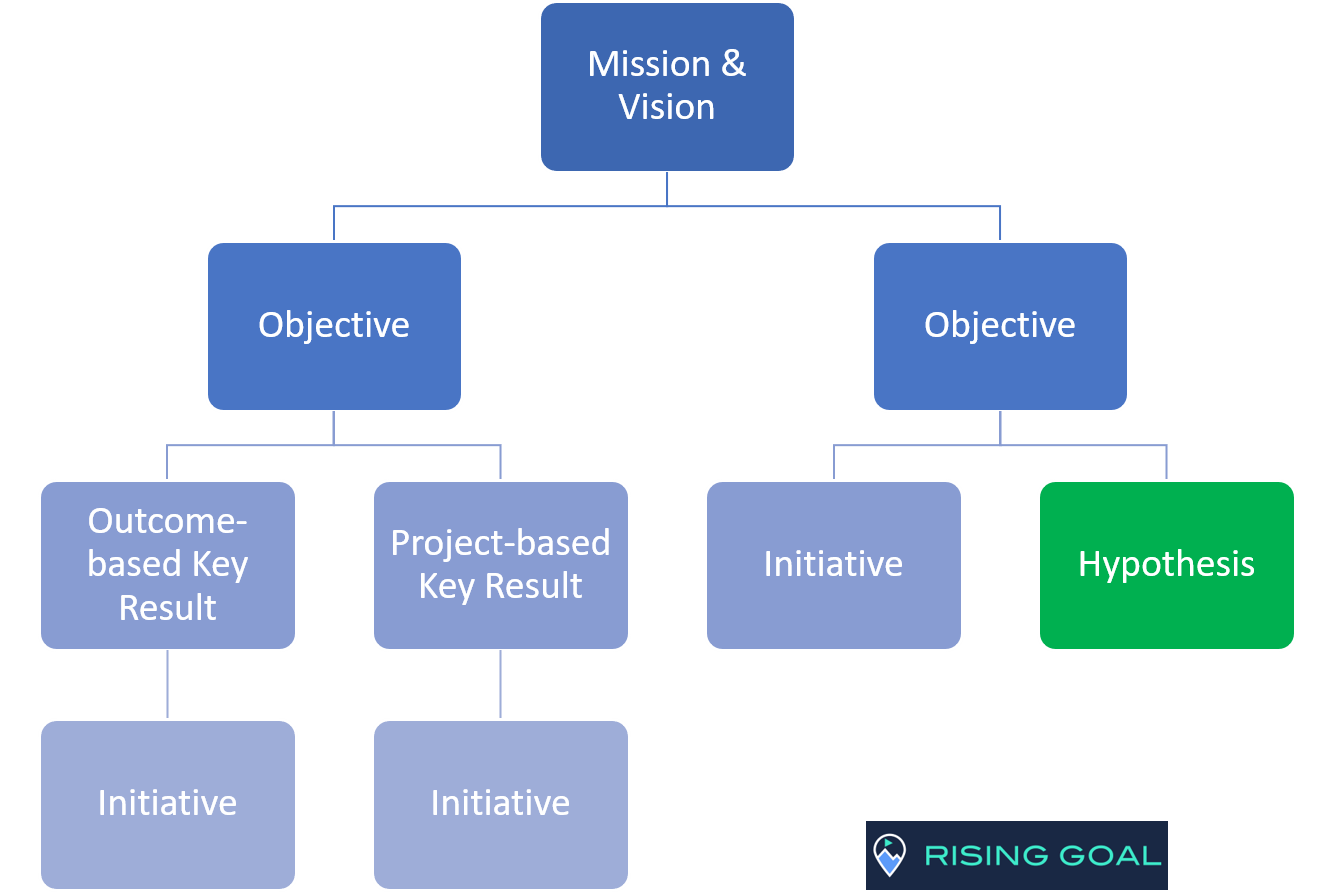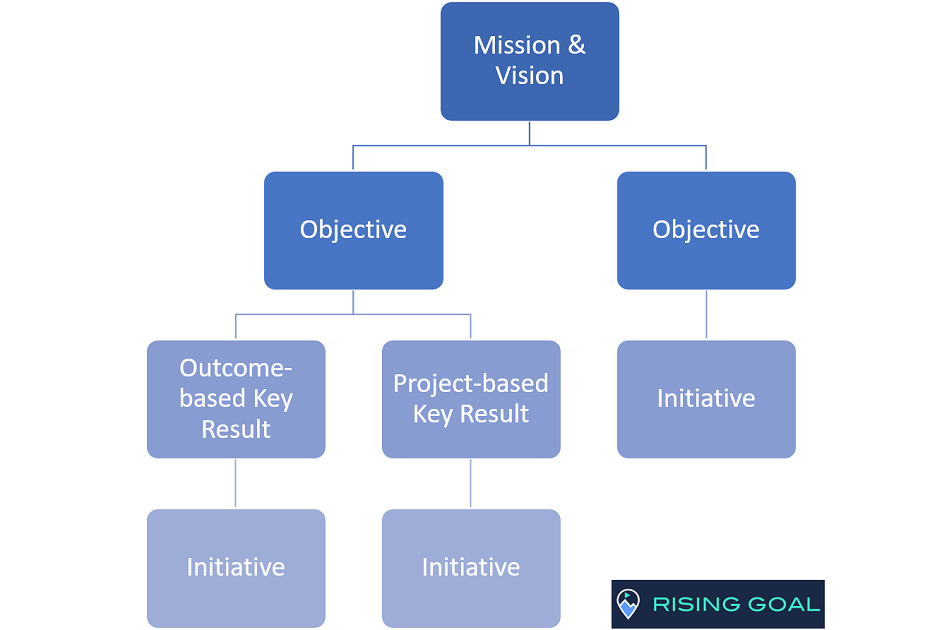OKR Cycle
To conclude this series of posts on the OKR model and how to enrich it, let’s take a closer look at OKR cycles.
Intro
A Deadline to hold yourself accountable
Cycles in the OKR model help organize goals within a time horizon.
However, Objective and Key Results carry their own definition of time. A good OKR is temporal. This is not new, it started with SMART Goals , where T stands for Time-Related or Time-Bound. This is a good practice to write effective OKRs. This constraint makes it possible to measure our progress towards this objective at the right pace. And thus, makes us responsible for achieving the goal.
Example
Increase our Product conversion rate from 10 to 20% by the end of the quarter
Organize the life cycle of OKR
But this temporality is not sufficient in the life cycle of an OKR.
- We must define it with the right time horizon
We might as well set a more ambitious goal for the end of the semester or less ambitious for the end of the month. Why chooses the quarter?
- You still have to know when to define this OKR!
Why set this objective during the year and not at the start of the year?
These questions are easily answered when we set our own goals without depending on other teams. It is obviously complicated in a more complex organization.
The cycles in the OKR model must answer these questions. This is part of the governance of your OKR program.
We know this very well from agile methods. It has made it possible to set up regular and frequent cadences at the level of organizations, in particular thanks to agile at scale.
A typical OKR Cycle
Typically, an OKR cycle starts with a kick off, to communicate on the selected measurable goals.
During the cycle, the teams will do reviews, quite frequent for the key results (typically from one to a few weeks), a little less for the objectives (often monthly). They can be at the sprint review agenda if it is suitable.
A cross-teams review in the middle of the cycle for cross-functional objectives is a minimum for realignment.
Before the end of the cycle, we prepare the next cycle in order to start at the end of the current cycle.
At the end, we review what has been achieved and what we have learned together. It concerns both the OKRs and the process itself.
If you are already agile, it will not surprise you. They have basically the same structure as a sprint but on a different time horizon and a different scope.
A typical sequence of OKR cycles
Medium-term cycle vs Short-term cycle
Usually, two cycles are defined in an OKR program: a medium- and a short-term cycle. We are used to associating the notion of strategy and tactics with these cycles.
Explanations
Perfectly performing an action like a Google Ads campaign, like in the following example, when it is a bad choice would have a very disappointing result. The strategy should allow you to make the best decisions in a competitive and changing environment. We therefore have at least a medium-term time horizon to achieve a strategic vision and make the best decisions. It is usually annual.
OKRs make it possible to move from strategy to its execution. We discussed this in the initiatives post. But for this, the strategy is not always sufficient to take action, maybe too conceptual, or too rich in options. To identify how we are going to achieve our strategic objectives, tactics can be of great help. For this we use a short-term time horizon, generally of a few months, rather quarterly. We are in the tactic where the stake is more local and more limited in time.
For Example
Strategic Objective
Become a leader on our product market by the end of the year.
Strategic Key Result
Increase our market share from 25% to 35% by the end of the year.
Tactical Objective
Find our sustainable growth engine by the end of the first quarter.
Tactical Key Result
Weekly signups increase from 100 to 1000 by the end of the quarter.
Operational Initiative
Launch an experimental google ads campaign.
OKR Examples
You can find this and other examples in our saas solution
Strategy vs tactics vs operational
The concepts of strategy and tactics are not obvious to everyone, including managers. We are too often immersed in operations. Understanding these concepts will help you to better articulate your goals, you and your collaborators.
Although derived from military vocabulary, this term is used in other fields such as corporate strategy. In its economic approach, it is the set of methods that maximize in a competitive universe the chances of achieving a given objective despite the actions of competitors. For Michael Porter, the business strategy is to organize the available resources to achieve a sustainable competitive advantage.
Let’s take a sports metaphor to avoid this military vocabulary:
Strategy is about long-term goals such as victory in the league or globe winner of the season. While tactics are about short-term goals such as winning a match or a competition. For example, to win the season’s globe for a discipline, it may be interesting to skip a race. It’s a tactical choice to lose temporarily in order to win the championship!
A team committed to a specific action (our initiatives) is the operational level.
These concepts can be broken down at 3 levels: corporate, business, product or service. In my opinion, this is what makes it difficult to understand these terms and causes confusion:
Example
Defining a product strategy is operational at the corporate level but strategy at the product level.
This is also the case when targeting a market segment for a product, although in this case it may be a matter of tactical choice.
In all cases, a strategy refers to a decision-making process. It is therefore a key part of an organization.
But if these terms don’t help, simplify it by talking only about the medium- and short-term time horizon for OKR cycle.
OKR Cycle and Agile Cadence
So, we have a Russian doll going from the strategic cycle, to the tactical cycle, to the operational cycle. The latter being organized by the agile methods that you have implemented in your teams: scrum, kanban, safe, etc.
As far as possible, we will try to synchronize these cycles (and the meeting that come with) with those already in place.
Example
Tactical cycles can be linked to PI planning (for Program Increment Planning). It is an event from the SAFE framework that allows the synchronization and coordination of the Agile Release Train (ART). The event brings together all the teams and all the actors of the program at the start of the PI. And typically lasts between 8 and 12 weeks.
Make the process yours
These two annual / quarter cycles are often found in typical OKR implementations. However, you must first think about your own needs or constraints. One of our clients made a different choice. Its implementation is based on a single semi-annual cycle with a definition of strategic objectives by the board and tactical objectives by the teams. Three two-month operational cycles (the release plans, defined by epics) punctuate the semester.
In this example, we have both a rather short strategy cycle synchronized with a rather long tactical cycle. This long time is a normal model in the case of B2B, but not without challenges. We can read this article on this aspect here.
The OKR cycle in the OKR Model
It’s time to put it all together. Here is the overview of the OKR model (as we implemented it in Rising Goal) :

Explore the full Rising Goal Model
Our solution has a complete model from strategy to execution, with Strategy, OKR, KPI & initiatives!
Conclusion
In this article, we saw that:
- The OKR model can be enriched with cycles, which is part of the OKR governance.
- You have typically a medium- and short-term cycle, related to strategy vision and tactical choices.
- Try to synchronize them with the existing cadences, especially the reviews.
- Make the process yours by customizing those cycles.
What’s next?
How we implemented this enriched model in our rising goal app?
We will see by example how this model is used in the service. This is a good way to get started with this product and understand how to use it.
Related Posts
OKR Hypothesis
In this article, we will see how hypothesis can enrich the OKR Model by helping continuous improvement and making better decisions.
OKR Initiative
In this article we will explore the place of the initiatives in the Objective and Key Results (OKR) Model, to link strategy and operation









Recent Comments